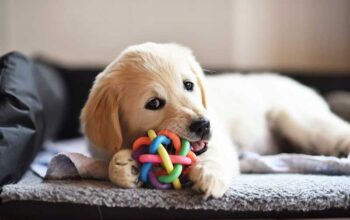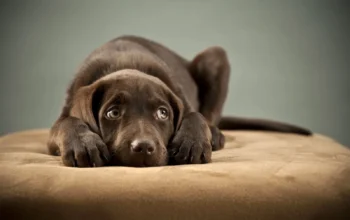How to Groom a Dog at Home: A Step-by-Step Guide. Grooming is an essential part of a dog’s overall health and well-being. Regular grooming keeps your pup clean, prevents skin infections, reduces shedding, and strengthens the bond between you and your furry friend. While professional groomers do an excellent job, frequent visits can be costly and time-consuming. The good news? You can groom your dog at home with the right tools and techniques!
Grooming at home might seem overwhelming at first, but with some patience and practice, it can become an enjoyable routine for both you and your dog. In this step-by-step guide, we’ll cover everything you need to know, from brushing and bathing to trimming nails and cleaning ears. Whether your dog is a tiny Chihuahua or a fluffy Golden Retriever, these tips will help you groom them safely and effectively.
Step 1: Gather Your Grooming Supplies
Before you start grooming, it’s essential to have the right tools on hand. Different breeds and coat types require specific grooming tools, so make sure you’re using the appropriate ones for your dog.
Essential Grooming Tools:
✔ Brush – Choose the right type for your dog’s coat:
- Slicker brush (for long-haired breeds like Golden Retrievers)
- Bristle brush (for short-haired breeds like Beagles)
- Deshedding tool (for heavy shedders like Huskies)
✔ Dog Shampoo – Use a mild, dog-specific shampoo (never human shampoo, as it can irritate their skin).
✔ Towel & Blow Dryer – A soft towel and a pet-friendly low-heat dryer to dry your dog’s coat after a bath.
✔ Nail Clippers or Grinder – Guillotine clippers or a dremel grinder to safely trim nails.
✔ Dog Toothbrush & Toothpaste – Specially formulated dog-safe toothpaste (never use human toothpaste, as it contains harmful ingredients like xylitol).
✔ Ear Cleaning Solution & Cotton Balls – A vet-approved ear cleaner to gently clean your dog’s ears.
✔ Scissors or Electric Clippers – If your dog has a long coat, you may need clippers with different blade lengths for trimming.
Once you have all the necessary supplies, it’s time to start grooming!
Step 2: Brushing Your Dog’s Coat
Brushing is one of the most important parts of grooming. It removes loose fur, prevents mats and tangles, and keeps the skin healthy by distributing natural oils.
How Often Should You Brush?
- Short-haired dogs (Labradors, Beagles) → Once a week
- Medium-haired dogs (Golden Retrievers, Border Collies) → 2-3 times a week
- Long-haired dogs (Shih Tzus, Poodles) → Daily
Brushing Technique:
- Start with a wide-tooth comb – Gently remove any knots or mats.
- Use the correct brush –
- For short coats, use a soft bristle brush in circular motions.
- For long coats, use a slicker brush to remove tangles.
- For double-coated dogs, use a deshedding tool to reduce shedding.
- Brush in the direction of hair growth – This prevents discomfort.
- Reward your dog with treats and praise – This helps make brushing a positive experience.
If your dog has severe mats, never cut them with scissors, as you may accidentally injure their skin. Instead, use a mat remover tool or consult a groomer.
Step 3: Bathing Your Dog
Bathing your dog helps remove dirt, odors, and excess oils. However, over-bathing can strip their coat of natural oils, so it’s important to find the right balance.
How Often Should You Bathe Your Dog?
- Short-haired dogs → Every 1-2 months
- Long-haired dogs → Every 3-4 weeks
- Dogs with skin allergies → Follow vet recommendations
Step-by-Step Bathing Process:
- Brush Before the Bath – This removes loose hair and prevents mats from getting worse.
- Use Lukewarm Water – Water that’s too hot or too cold can shock your dog.
- Wet Your Dog’s Coat Thoroughly – Avoid getting water in their ears.
- Apply Dog Shampoo – Lather gently, massaging into their coat. Avoid the eyes and ears.
- Rinse Thoroughly – Leftover shampoo can cause skin irritation.
- Dry Properly – Use a towel to absorb moisture and a low-heat blow dryer (if your dog tolerates it).
Pro Tip: For dogs who hate baths, use peanut butter on the shower wall (on a lick mat) to keep them distracted!
Step 4: Trimming Your Dog’s Nails
Overgrown nails can cause discomfort, affect posture, and even lead to joint pain. Regular nail trims keep your dog’s paws healthy and prevent painful cracking or splitting.
How Often Should You Trim Nails?
- Every 2-4 weeks, depending on your dog’s activity level.
- If you hear clicking sounds when they walk on hard surfaces, their nails are too long.
How to Trim Your Dog’s Nails:
- Use the right tool – Nail clippers (scissor-type or guillotine-style) or a dremel grinder for smoother edges.
- Hold the paw gently but firmly.
- Trim little by little – Avoid cutting too close to the “quick” (the pink part inside the nail that contains blood vessels).
- If you accidentally cut the quick, use styptic powder to stop bleeding.
- Reward with treats and praise!
If your dog hates nail trims, do one paw at a time and use lots of treats to create a positive experience.
Step 5: Cleaning Your Dog’s Ears
Ear infections are common in dogs, especially floppy-eared breeds like Cocker Spaniels and Basset Hounds. Regular ear cleaning prevents infections and wax buildup.
How Often Should You Clean Ears?
- Floppy-eared dogs → Once a week
- Upright-eared dogs → Every 2-3 weeks
How to Clean Your Dog’s Ears:
- Check for redness, bad odor, or excessive wax (signs of infection).
- Use a vet-approved ear cleaner (never use cotton swabs).
- Apply a few drops into the ear canal and massage gently.
- Let your dog shake their head.
- Wipe the outer ear with a cotton ball to remove loosened debris.
If your dog shows signs of pain, excessive scratching, or head tilting, consult a vet.
Step 6: Brushing Your Dog’s Teeth
Dental health is often overlooked, but bad breath, plaque buildup, and gum disease can cause serious health issues in dogs.
How Often Should You Brush?
- Ideally, daily, but at least 3 times a week is beneficial.
How to Brush Your Dog’s Teeth:
- Use dog-safe toothpaste (never human toothpaste).
- Start slow – Let them sniff and taste the toothpaste first.
- Use a soft-bristle toothbrush or finger brush.
- Brush in circular motions, focusing on the gum line.
- End with praise and a dental treat!
For dogs who resist brushing, dental chews and water additives can help reduce plaque buildup.
Conclusion
Grooming your dog at home doesn’t have to be stressful! By following these step-by-step guidelines and using positive reinforcement, you can turn grooming into an enjoyable bonding experience. Regular brushing, bathing, nail trims, ear cleaning, and dental care will keep your dog looking great and feeling healthy.
Does your dog enjoy grooming, or do they resist it? Let us know in the comments below—we’d love to hear your tips and experiences!



